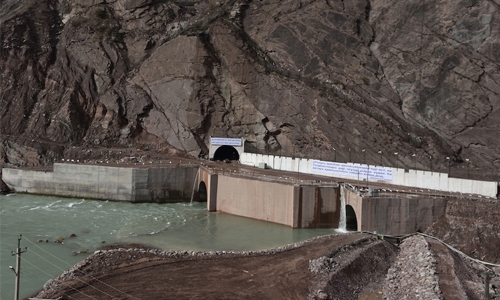Tajikistan launches $4 bln dam to end power shortage
Tajik President Emomali Rakhmon yesterday inaugurated what is expected to be the world’s tallest hydro-electric power plant, a $3.9 billion project that will turn the impoverished country into a key power producer in Central Asia. In a colourful ceremony deep in the Pamir mountains, the Tajik leader pushed a large symbolic button to applause from the audience to mark the first of six turbines in the Rogun hydroelectric dam going online.
Men in hard hats danced to songs about the dam and waved national flags. “Rogun is light, Rogun is glory!” went one of the songs. The power plant is expected to reach capacity of 3,600 megawatts -- the equivalent of three nuclear power plants -- when it is completed in a decade. The power plant will double energy production in the country of nearly nine million people, alleviating a long-lasting, debilitating national energy deficit.
Surplus energy will be sold to neighbours such as Afghanistan, Pakistan and Uzbekistan. Built on the Vakhsh River in southern Tajikistan, the plant is expected to reach a height of 335 metres (1,099 feet) when completed, becoming the world’s tallest hydro-electric dam. Today, Rogun -- overseen by the Italian company Salini Impregilo -- is still a vast construction site, with rocky earth covering the territory from which the powerful Vakhsh was diverted. In 2016, Rakhmon, a former collective farm boss, climbed into a bulldozer at a groundbreaking for the dam, in a sign of the president’s personal attachment to the scheme.
Plans to build a dam in southern Tajikistan date back to the Soviet era, but the project was scaled up in recent years. In 2017, Tajikistan raised $500 million from an inaugural international bond to help finance the construction. Authorities hope that when the project gains momentum it will generate money to finance further construction. Before the ceremony, Rakhmon discussed the construction of the plant with Cyril Muller, World Bank vice president for Europe and Central Asia.
Related Posts

